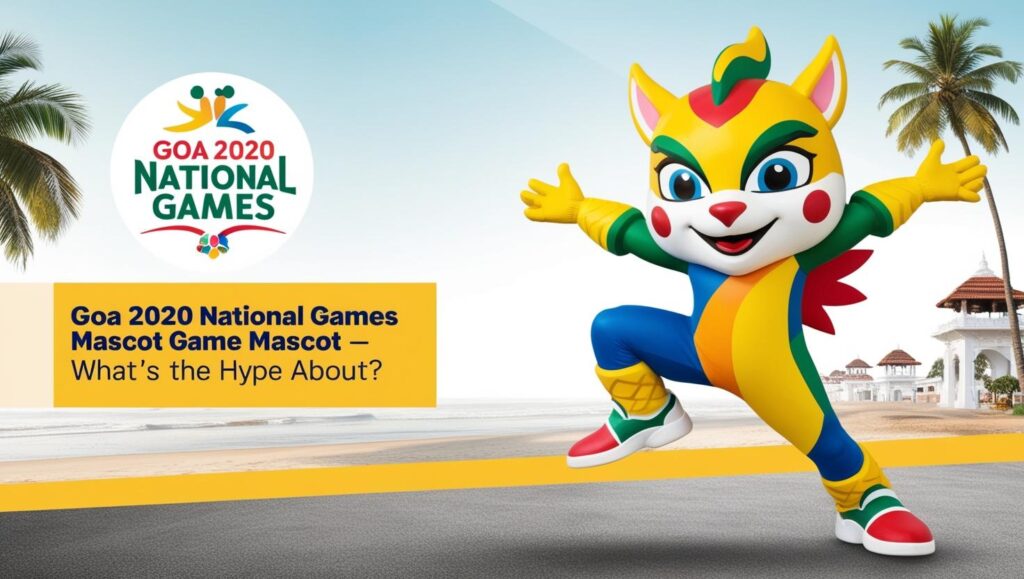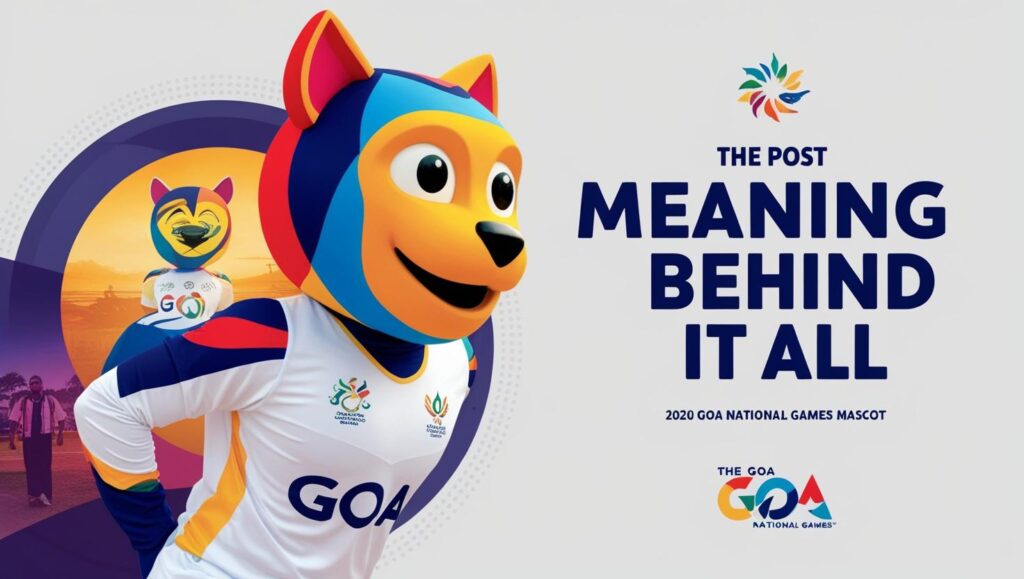So, Goa 2020 National Games Mascot. Yeah, the event got delayed and all, but let’s talk about something cooler—the mascot. You’ve seen these quirky little characters in every big sports event, right?
They pick an animal, throw in some colors, give it a name, and boom! Mascot ready. But Goa did something different. They went with a bird. Yeah, a bird. And not just any bird—meet ‘Rubigula.’

Now, before you scratch your head wondering what a Rubigula is, let’s break it down. It’s actually the scientific name of the Flame-throated Bulbul, the state bird of Goa.
So, it makes sense, right? Represent the state, make it meaningful. But let’s be honest, most people just thought it was a cute little bird with funky colors. And hey, that works too!
Why a Bird Though?
Okay, let’s talk logic. Most sports mascots are tigers, lions, elephants—big animals, powerful, aggressive. They scream strength. But Goa? Nah, they went with a bird. And not just any bird, but one that’s all about energy, vibrance, and being unique.
The Flame-throated Bulbul is special to Goa. It’s not found everywhere, it’s got this fiery orange throat, and it stands out. Just like how Goa is different from the rest of India with its beaches, culture, and chill vibes. So, yeah, it makes sense.

What’s Special About Rubigula?
First off, the name. ‘Rubigula’ comes from *Pycnonotus rubigula*, which is the bird’s scientific name. Fancy, huh? But the best part? It actually sounds cool. Like, imagine chanting ‘Rubigula’ in a stadium. Way better than something generic like ‘Goa Bird’ or ‘Bulby.’
Then there’s the design. Bright yellow body, fiery red throat, big round eyes—everything about this little dude screams energy. And honestly, when you look at it, you feel like it’s excited to be there. It’s got this sporty, peppy vibe. No unnecessary muscle flexing or aggressive poses. Just a happy little bird, ready to cheer you on.
The Meaning Behind It All
Goa is all about fun, culture, and energy. And that’s what Rubigula stands for. It’s not just some random mascot they threw together. It represents nature, heritage, and the idea of bringing people together through sports.

The organizers wanted something that truly felt like Goa, and this bird? Perfect match.
It’s also a symbol of resilience. The National Games were delayed multiple times (yeah, we know, COVID and all that), but the spirit of the event didn’t die down. Just like the Flame-throated Bulbul, which thrives even in rough conditions, the Games pushed through despite setbacks
People’s Reaction to Rubigula
When it was first revealed, people had mixed reactions. Some were like, “Wow, this is fresh!” Others? “Why not a tiger? Or a dolphin? Dolphins are cool.” But slowly, Rubigula grew on everyone. It started popping up on posters, merchandise, and social media. Kids loved it. And let’s be real, once you get kids on board, the mascot is a hit.
Sports fans also appreciated the uniqueness. It wasn’t another generic strong animal. It had character, it had meaning, and it wasn’t trying too hard. Just a little bird with a big heart, representing Goa on the national stage.
How Rubigula Became the Official Mascot – Step-by-Step
How Rubigula Became the Official Mascot – Step-by-Step
Choosing the Right Symbol
Goa wanted something that wasn’t just visually cool but also culturally meaningful. The state bird—the Flame-throated Bulbul—was a natural choice.
Naming the Mascot
Instead of giving it a cute or random name, they went smart with it. Rubigula is actually from the bird’s scientific name, Pycnonotus rubigula. Sounds exotic and catchy.
Designing the Look
Bright colors, energetic stance, and expressive eyes. The idea was to create a cheerful, sporty vibe rather than the usual aggressive mascot style.
Public Reveal
Rubigula was officially unveiled in 2020 by the organizers, sparking a mix of curiosity and praise.
Promotions & Merchandise
Posters, souvenirs, school kits—you name it, Rubigula was on it. It quickly went from “who’s this?” to “hey, that’s our mascot!”
FAQs About Rubigula – Goa 2020 National Games Mascot
Q: What kind of bird is Rubigula based on?
A: Rubigula is based on the Flame-throated Bulbul, Goa’s official state bird. It’s known for its vibrant colors and energetic personality.
Q: Why did Goa choose a bird instead of a more traditional mascot animal like a tiger?
A: Goa wanted to represent its uniqueness and vibrant spirit. A bird like the Flame-throated Bulbul captures that perfectly—colorful, local, and full of energy.
Q: What does the name Rubigula mean?
A: ‘Rubigula’ comes from the bird’s scientific name, Pycnonotus rubigula. It’s a nod to authenticity and nature.
Q: Was Rubigula well received by the public?
A: At first, it got mixed reactions, but it quickly grew on people—especially kids. Now, it’s seen as a fresh and fun symbol of Goa’s sporting spirit.
Q: Where can I see Rubigula now?
A: You can still find Rubigula on official National Games Goa merchandise, posters, and promotional material from the 2020 (eventually 2023) edition.
Final Thoughts – Did Rubigula Do Its Job?
Mascots are supposed to bring life to an event, give it an identity, and make people connect with it. And Rubigula? It nailed it. It wasn’t just a mascot—it became a symbol of the event’s energy and spirit. Even with all the delays and uncertainties, Rubigula kept the hype alive.
So, if you ever see this bright little bird on a T-shirt or a banner, just know—it’s more than just a cute design. It’s Goa’s way of saying, “We’re here, we’re different, and we’re ready to play!”

And that’s all there is to it. Rubigula might not be the most intimidating mascot, but hey, it sure is one of the coolest ones out there. What do you think? Would you have picked a different mascot for Goa? Let’s hear it!
GTA Goa Game Download – Where to Download & How to Obtain It?
Leave a Reply